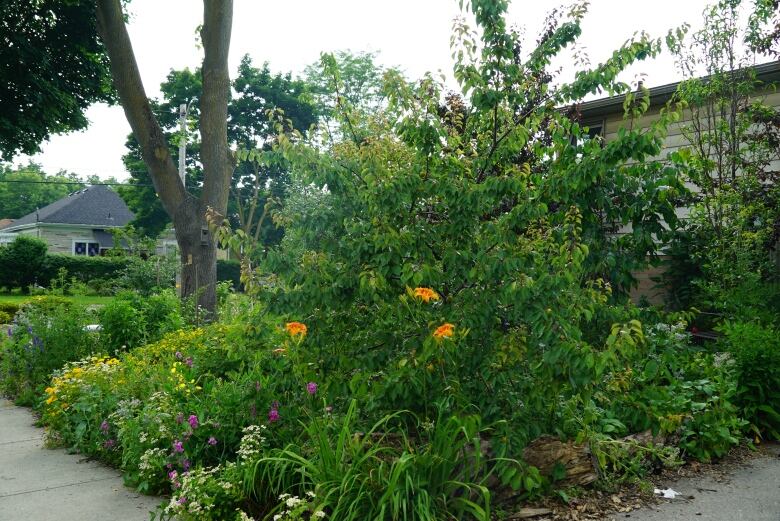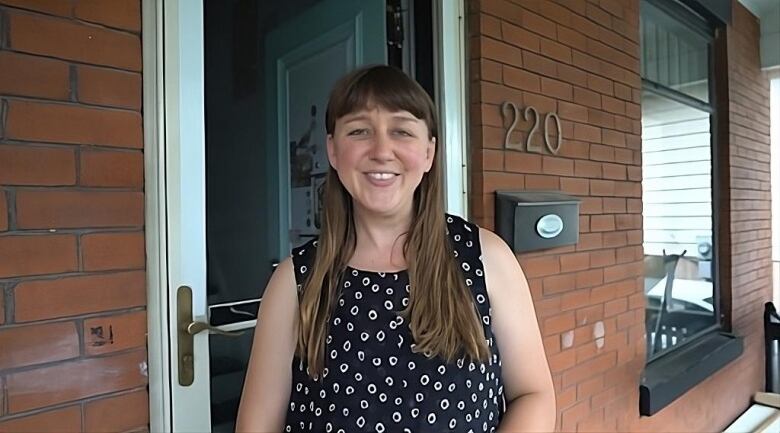Locally-sourced food forest grows produce and friendships in London neighbourhood
Raspberries, almonds, plums are all part of a neighbourhood's food garden
A London woman is fostering new ecosystems and binding her neighbourhood together by growing a food forestin her front yard.
Teresa Rutten's Waterloo Street front yard is full of unruly vegetation andstands out against the backdrop of manicured lawns with its large almond and peach trees, raspberry bushes, grape vines, and flowers brushingthe mulberry-stained sidewalk.
"I started by planting fruit trees," saidTeresa Rutten, who began growing the food forestin 2018.
A food forest, also known as a food garden, is similar to a garden but resembles the way plants grow in natural ecosystems, such as a forest, in order to maximize the amount of crops harvested.

Rutten launched her food forest project on Waterloo Street to help wildlife grow and to provide locally-grown, healthy foods to peoplein her neighbourhood.
She mainly grows fruits such as persimmons, plums, peaches and grapes along with nuts and herbs.
The food forest has become a meeting place in the neighbourhood for peopleto chat, pick their favourite foods, and share their homemade dishes, Rutten said.
"We're just getting to know each other which, is great because when we get to know each other, we start to share resources," said Rutten. "Renejust brought over a bottle of kombuchathat she made...[another neighbour] is bringing over a curry chickpea dish for supper that we will have together."

ReneVanderbrink, a neighbour on Waterloo Street, likes picking the strawberries and almonds from the food forest.
"Having free fruit around that's safe and nutritious is amazing," said Vanderbrink, adding that the food forest has become a hub to socialize with other neighbours.
"We love being next door to the fruit forest...And people love walking by and checking out what's what's new," said Vanderbrink. "We do see neighbours picking things occasionally and enjoying sitting in the space."

Deb Fox, who has livedin the neighbourhood on Simcoe Street since 2006, noticed wildlife expand since Rutten launched her food forest six years ago.
"The ecosystem here is very much in good shape," said Fox."We didn't have chickadees in the neighborhood until Teresaput up those little bird houses. That population has established itself because she provided the home."
Fox does not pick foods from the forest garden because she prefers saving the fruits, nuts and seeds for those in need. As a gardener herself, she enjoys stopping by the food forest to talk to Rutten and other neighbours.
"It's a focal point.It's a community meeting place. People stop and they chat, myself included."













_(720p).jpg)


 OFFICIAL HD MUSIC VIDEO.jpg)
.jpg)



























































































